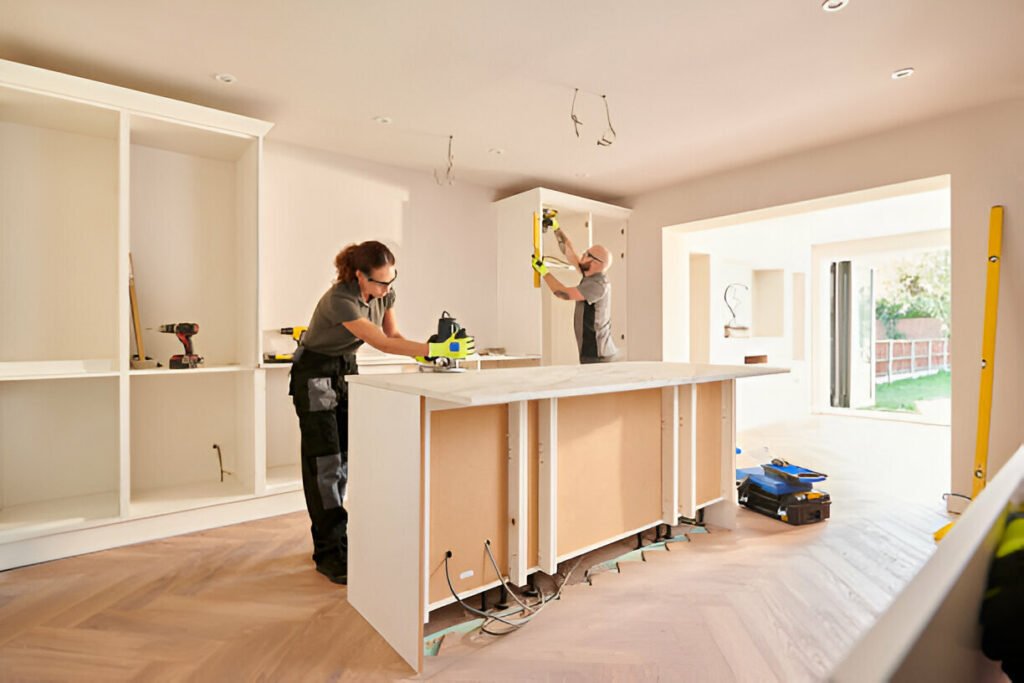Choosing the right colors for your home can be quite a challenge. One question that often arises is whether to paint the ceiling the same color as the walls. This decision can significantly impact the overall look and feel of a room. In this article, we’ll explore the pros and cons of this painting approach to help you make an informed decision.
Creating a Unified Look
One of the primary benefits of painting the ceiling the same color as the walls is the creation of a unified, cohesive look. This approach can make the room feel more harmonious, as there is no sudden change in color that can break up the space visually. This is particularly effective in modern or minimalist designs where a seamless look is desired.
Making a Room Feel Larger
Painting the ceiling the same color as the walls can make a room feel larger. When there is no contrast between the walls and the ceiling, the eye is not drawn to the edges of the room. This can create an illusion of more space, which is particularly beneficial in small rooms or areas with low ceilings.

Enhancing Architectural Features
If your room has unique architectural features such as crown molding, beams, or interesting ceiling details, painting the ceiling and walls the same color can help highlight these elements. The uniform color allows the details to stand out more, as there is no distraction from differing colors.
Simplifying the Painting Process
On a practical note, painting the ceiling the same color as the walls can simplify the painting process. There is no need to worry about cutting in or creating clean lines where the ceiling meets the walls. This can save time and effort, especially if you’re doing the painting yourself.
Potential Downsides
While there are several benefits to this approach, there are also some potential downsides to consider. It’s important to weigh these against the advantages to determine if this is the right choice for your space.
Risk of Feeling Enclosed
One downside is that painting the ceiling the same color as the walls can sometimes make a room feel enclosed or claustrophobic, especially if a dark color is used. This is because there is no visual break, and the uniform color can make the space feel smaller.
Difficulty in Hiding Imperfections
Another potential issue is that imperfections in the ceiling may be more noticeable. When the ceiling is the same color as the walls, any flaws or uneven textures are not hidden by a lighter color, which can typically mask such issues.
Impact on Lighting
The color of the ceiling can also impact the lighting in a room. A darker ceiling can absorb more light, making the room feel darker overall. Conversely, a lighter ceiling can help reflect light and make the space feel brighter. This is an important consideration, particularly in rooms that do not receive a lot of natural light.
Color Choice Matters
The choice of color plays a crucial role in whether painting the ceiling the same color as the walls will work for your space. Lighter colors can help create a sense of openness, while darker colors can add a cozy, intimate feel but might also make the room feel smaller.
Considering Room Function
Different rooms may benefit more from this approach than others. For example, a bedroom might feel more serene and cocoon-like with a single color enveloping the space, while a living room or kitchen might benefit from a lighter ceiling to enhance brightness and openness.
Personal Preference
Ultimately, personal preference is a significant factor. Some people love the look of a single color enveloping a room, while others prefer the traditional contrast between walls and ceiling. It’s important to consider your taste and the overall style you want to achieve in your home.
In conclusion, painting the ceiling the same color as the walls can create a unified look, make a room feel larger, and highlight architectural features. However, it can also make a room feel enclosed, reveal imperfections, and impact lighting. The choice of color and the function of the room are crucial considerations. Ultimately, personal preference will play a significant role in this decision.


